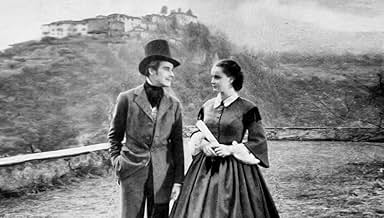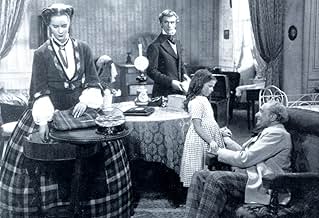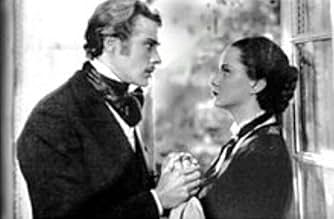A woman of humble origins who marries a nobleman in the mid-19th century. Unfortunately, the unstoppable force of their love hits an immovable object: his grandmother.A woman of humble origins who marries a nobleman in the mid-19th century. Unfortunately, the unstoppable force of their love hits an immovable object: his grandmother.A woman of humble origins who marries a nobleman in the mid-19th century. Unfortunately, the unstoppable force of their love hits an immovable object: his grandmother.
Domenico Viglione Borghese
- Dina
- (as Viglione Borghese)
Emilio Baldanello
- Il dottore
- (uncredited)
Storyline
Did you know
- TriviaAnna Carena's debut.
- ConnectionsReferenced in We, the Women (1953)
Featured review
PICCOLO MONDO ANTICO (LITTLE OLD-FASHIONED WORLD), based on Antonio Fogazzaro's esteemed 1895 novel of the same title, is set in 19th Century Lombardy, then under Austrian domination. Like Manzoni's novel I PROMESSI SPOSI, the story is set into motion by the marriage of a young couple that meets opposition. The couple here is Franco and Luisa. Franco's grandmother, the Marchesa, is his only "parent." This cold-hearted, über-aristocratic matriarch won't permit her grandson to marry Luisa, the daughter of a government "funzionario." When he does so anyway, against her wishes, the fat old meanie disinherits him and does whatever she can to persecute the couple.
Franco becomes involved in the patriotic movement, the Risorgimento, to liberate Lombardy and other Italian states from foreign domination and work toward unification with the Kingdom of Piedmont and create a new Italy. Grandma, an entrenched conservative, condemns her grandson's political agenda and co-operates with the Austrians to harm him. Tragedy befalls the couple when their little daughter Ombretta accidentally drowns. Franco and Luisa are estranged. The film concludes with a remorseful grandmother trying to make amends, Franco and Luisa reconciling, and with Franco going off to the Crimean War.
Massimo Serato is a handsome and convincing presence as Franco; Alida Valli is even better as Luisa, especially in rendering her desperation after the death of her child. She won an Italian award for this performance. But it is Ada Dondini who steals the show as the wicked-witch Marchesa whenever she is on screen. The exterior photography by Arturo Gallea is particularly beautiful, with moody misty shots of Lake Como, boats on the lake, nearby estates and villages. There is a stark scene of high visual contrast toward the end which has Alida Valli going to a church, wearing a black shawl, in the wind-swept rainy background. This interestingly suggests a similar scene in Visconti's 1948 LA TERRA TREMA. All in all, this is a creditable movie and one of the key works from the Italian fascist era.
Franco becomes involved in the patriotic movement, the Risorgimento, to liberate Lombardy and other Italian states from foreign domination and work toward unification with the Kingdom of Piedmont and create a new Italy. Grandma, an entrenched conservative, condemns her grandson's political agenda and co-operates with the Austrians to harm him. Tragedy befalls the couple when their little daughter Ombretta accidentally drowns. Franco and Luisa are estranged. The film concludes with a remorseful grandmother trying to make amends, Franco and Luisa reconciling, and with Franco going off to the Crimean War.
Massimo Serato is a handsome and convincing presence as Franco; Alida Valli is even better as Luisa, especially in rendering her desperation after the death of her child. She won an Italian award for this performance. But it is Ada Dondini who steals the show as the wicked-witch Marchesa whenever she is on screen. The exterior photography by Arturo Gallea is particularly beautiful, with moody misty shots of Lake Como, boats on the lake, nearby estates and villages. There is a stark scene of high visual contrast toward the end which has Alida Valli going to a church, wearing a black shawl, in the wind-swept rainy background. This interestingly suggests a similar scene in Visconti's 1948 LA TERRA TREMA. All in all, this is a creditable movie and one of the key works from the Italian fascist era.
- ItalianGerry
- Dec 3, 2002
- Permalink
Details
- Release date
- Country of origin
- Language
- Also known as
- Mali starinski svet
- Filming locations
- Oria, Valsolda, Como, Lombardia, Italy(Villa and village streets)
- Production companies
- See more company credits at IMDbPro
- Runtime1 hour 46 minutes
- Color
- Sound mix
- Aspect ratio
- 1.37 : 1
Contribute to this page
Suggest an edit or add missing content













